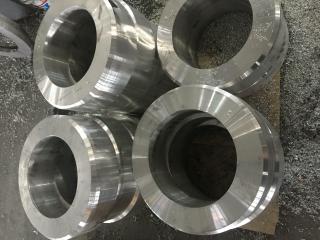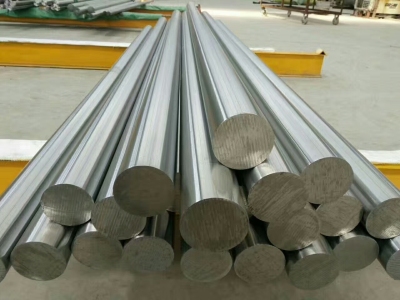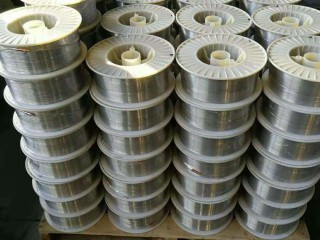
Description
1. Introduction to 1J22 soft magnetic alloy
1J22 corresponds to the corresponding grades and similar grades Co50V2, 50КФ (Russia), Permendur (UK), Supermendur (US), HiperCo50 (US).
1J22 is a high saturation magnetic induction strength iron-cobalt vanadium soft magnetic alloy. Among the existing soft magnetic materials, 1J22 has the highest saturation magnetic induction strength, up to 2.4T, the Curie point can reach 980℃, and the saturation magnetostriction coefficient can reach 60~100×10-6. Due to the high saturation magnetic induction strength, the volume can be greatly reduced when making a motor of the same power, and when using an electromagnet, a large suction force can be generated under the same cross-sectional area. Due to the high Curie point, the alloy can be enabled to operate at higher temperatures where other soft magnetic materials have been completely demagnetized and maintain good magnetic stability. Due to its large magnetostrictive coefficient, it is very suitable for magnetostrictive transducers, with high output energy and high working efficiency. The alloy has a low resistivity (0.27μΩ·m) and should not be used at high frequencies. It is expensive, easy to oxidize, and has poor processing performance. Adding an appropriate amount of nickel or other elements can improve its processability.
1J22 material technical standards
GB/T 15001-1994 “Size, appearance, surface quality, experimental methods and inspection rules of soft magnetic alloy”
GB/T 15002-1994 “Technical conditions for soft magnetic alloys with high saturation magnetic induction strength”
2. 1J22 chemical composition
According to the US standard, the national standard is strictly implemented
3. 1J22 heat treatment and delivery status
Cold-rolled strip sample: As the furnace heats up to 850-900℃, keep the heat in for 3-6 hours, cools to 750℃ at a speed of 50℃/h, and then cools to 300℃ at a speed of 180-240℃/h, and comes out of the furnace. The annealing medium is hydrogen with a dew point not higher than -40℃.
Sample taken from the forging: As the furnace rises to 1100℃±20℃, keep the heat for 3 to 6 hours, cool to 850℃ at a speed of 50 to 100℃/h, keep the heat for 3 hours, then cool to 700℃ at a speed of 30℃/h, and then cool to 300℃ at a speed of 200℃/h, and come out of the furnace. The annealing medium is hydrogen with a dew point not higher than -40℃.
Materials used for high magnetic induction strength, low coercive force, and high rectangular ratio under a lower magnetic field: as the furnace rises to 850 ℃±10 ℃, insulated for 4 hours, cools to 750 ℃ at a speed of 50 ℃/h, insulated for 3 hours, and then cools to 300 ℃ at a speed of 200 ℃/h, and discharges from the furnace. At the insulation (750 ℃), 1240-1600 A/m DC magnetic field is added, and the annealing medium is hydrogen with a dew point not higher than -40 ℃.
1J22 varieties specifications and supply states include cold-rolled strips, cold-drawn wire materials, hot-rolled (forged) flat materials and bars, non-standard forgings, and 1J22 smelting and casting processes are melted by vacuum induction furnaces.
4. Mechanical properties of 1J22 room temperature and various temperatures
1J22 hardness: alloy soft HRB90, cold hard HRC35.
1J22 Tensile strength: Alloy soft state σb=490MPa; cold hard state σb=1323MPa.
1J22 stipulates non-proportional elongation stress [1] Alloy soft state σP0.2=343MPa.
1J22 after-break elongation alloy after-break elongation δ=1%.
1J22 elastic modulus E=216GPa.
V. 1J22 organizational structure
1J22 alloy structure The structure of the alloy is a single-phase solid solution with a bulk-center cubic lattice. The γα phase transition occurs near 900-930°C. When the temperature is lower than 730°C, an order is generated to form a FeCo superstructure, and the disordered α phase is converted into an ordered α′ phase.
6. 1J22 process performance and requirements
After quenching at around 880°C, the 1J22 forming performance alloy can be processed into thin strips and thin filaments. The belts and filaments can be punched, wound or processed into components of various shapes.
1J22 welding performance Welding performance is poor.
1J22 Parts Heat Treatment Process
1J22 Surface Treatment Process
1J22 Cutting and Grinding Performance The hot-rolled (forged) materials, cold drawing materials and strips of this alloy can be cut and grinded. When the alloy is processed into components and is subjected to a slow cooling final heat treatment, the plasticity is poor and can only be slightly ground.
7. 1J22 application fields
Suitable for lightweight and small size aviation and aerospace electrical components, such as microelectronic rotors, electromagnet pole heads, relays, transducers, etc.


